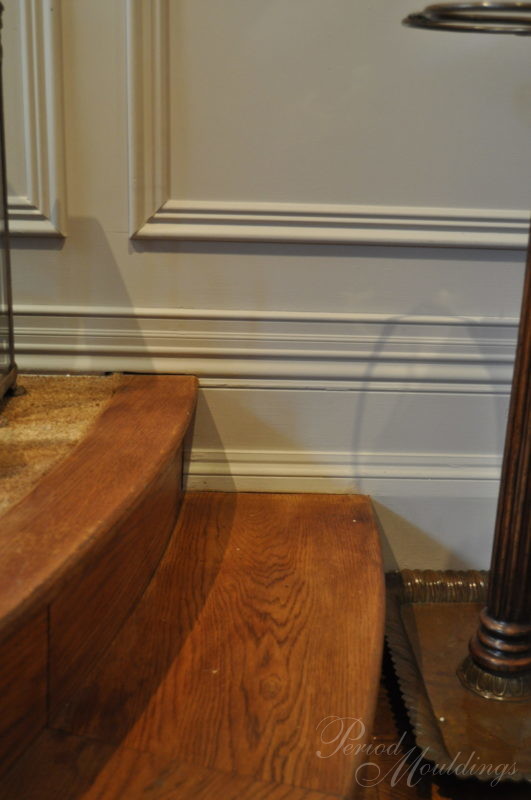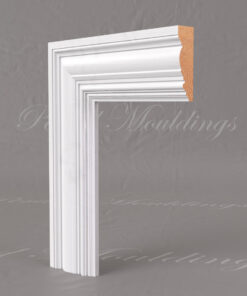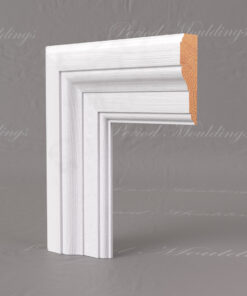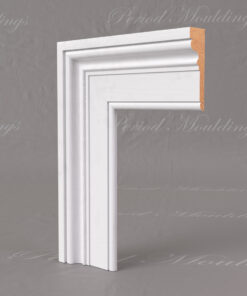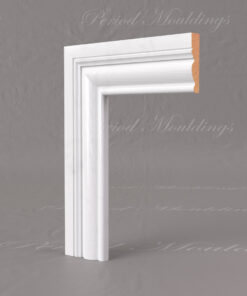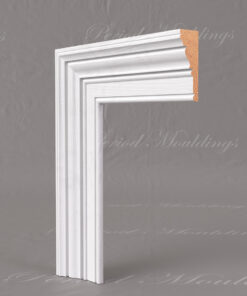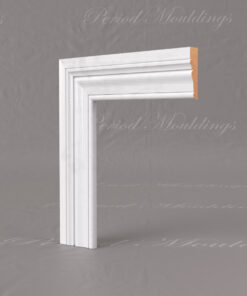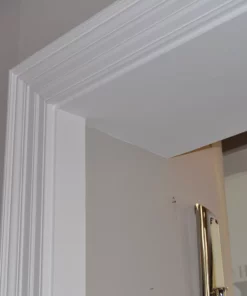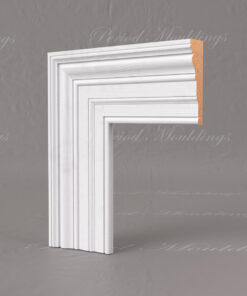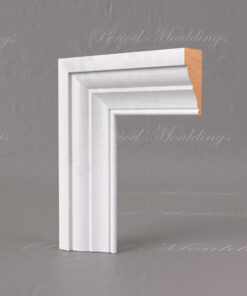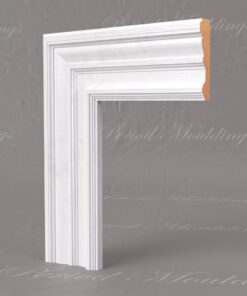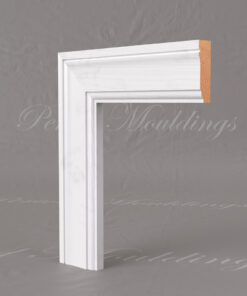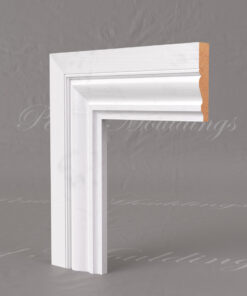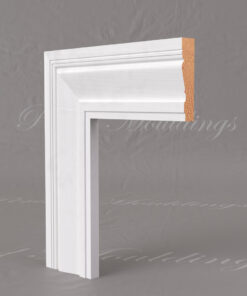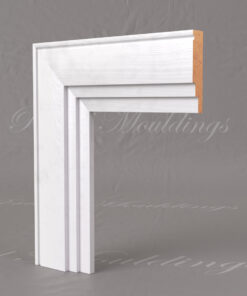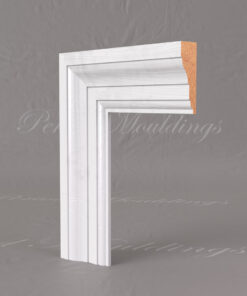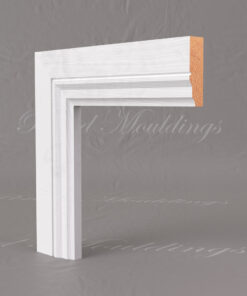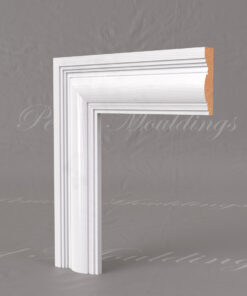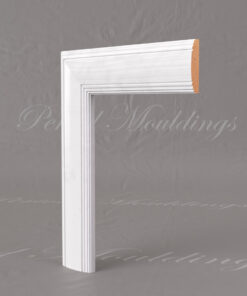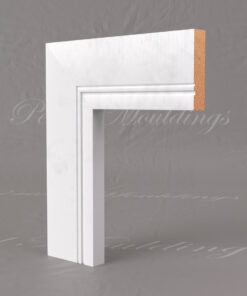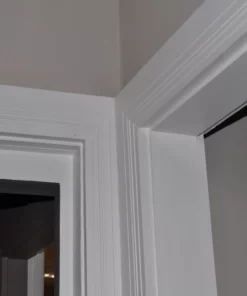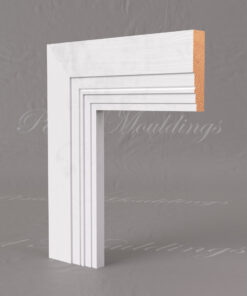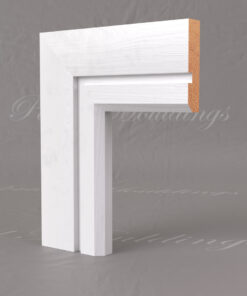Architrave is a feature of the home and an intrinsic element of interior design that is very much understated, but you would miss it if it wasn’t there. It is a feature that offers both aesthetic and practical benefits, and as such merits careful consideration, and therefore we have put together this guide to breakdown the process of understanding the purpose and advantages of architrave and channelling this knowledge into making the right decisions for your home.
What is architrave?
Architrave is an interior moulding—often referred to as a trim or casing—that you typically find in traditional homes, though it also suits contemporary designs. Like skirting boards, architrave serves a similar purpose but frames the outside of doors and windows. Because of this, it’s essential for both skirting and architrave to match. You can choose architrave from various styles, materials, thicknesses, lengths, and finishes to best complement your existing interior design.
While natural wood architrave can last a long time, it may eventually suffer damage or no longer fit the style you want to achieve. If you need to replace it, this guide will help you select the right architrave for your home.
What are the benefits of architrave?
Architecturally, people see the greatest benefit of architrave as its ability to create an illusion of height and to emphasise a period door or window in a room or corridor. But in an aesthetic sense, architrave provides much more than that. It can also offer presence and depth to a room, and provide important balance where there is a pattern that is irregular when compared with its straight lines. Architrave also enables you to introduce colours either in contrast or in complement to wall and ceiling colours, and in either bold statements, subtle enhancements or neutral shading. Ultimately, however, architrave has a primarily functional purpose. Builders often leave gaps between walls and door frames to allow for subtle movements and to ensure the plasterboard doesn’t crack. Architrave is ideal for hiding these joints, and also messy finishing, seams or cracks which come from poor workmanship. It does happen and architrave can mask these to provide a neat and tidy finish.
Victorian Architrave
Exclusively From Period Mouldings
Edwardian Architrave
Exclusively From Period Mouldings
Types of architrave
We’ll cover materials for architrave later, but for now, let’s focus on design. Architrave styles have evolved over time to reflect periods like Victorian, Georgian, Edwardian, and Contemporary. Traditional designs feature classic curves and shapes, often inspired by Regency, Greek, or Gothic styles, while modernist designs favor cleaner lines with influences from expressionist and Art Deco styles. The key is to match your architrave to the existing style in your home, paying attention to details like moulding, thickness, material, and finish.
Choosing the right size of architrave
Choosing the right size of architrave is important. It must fit the room and available space. It should also match the skirting and other mouldings in the room. Architrave usually comes in standard 2.4m lengths, enough to cover a standard door height and minimise waste. For width, your architrave should match the door or window frame. It also needs to balance with the frame and the wall. A wide architrave with a small gap to the wall won’t look right. Similarly, a narrow architrave may look odd in a large space. When considering thickness, there are various tapered designs in Victorian, Edwardian, and Georgian styles. The bottom thickness (the thickest part of the profile) is most important. It should match the thickness of your skirting so that neither is proud when installed.
Types of architrave material
The most adaptable materials are natural woods such as Pine, Tulipwood, Sapele and Oak. These are strong, robust and hard-wearing woods, which can be sanded down and different finishes applied, while retaining a natural look, and are also easy to handle and machine to adapt shapes to the space you are working with.
How to finish architrave
You can purchase architrave untreated, allowing you to apply your own stain or varnish, or pre-finished with stain, primer, or lacquer. The choice depends on the environment and the finish you want. Ideally, the architrave should match your skirting, so choose based on the work you’re willing to do. To match existing painted skirting, sand untreated wood, apply an undercoat, and finish with a top coat, or lacquer it for a natural look. You can paint or varnish architrave before or after installation, though doing so before can risk damaging the finish during installation.
Contemporary Architrave
Exclusively From Period Mouldings


